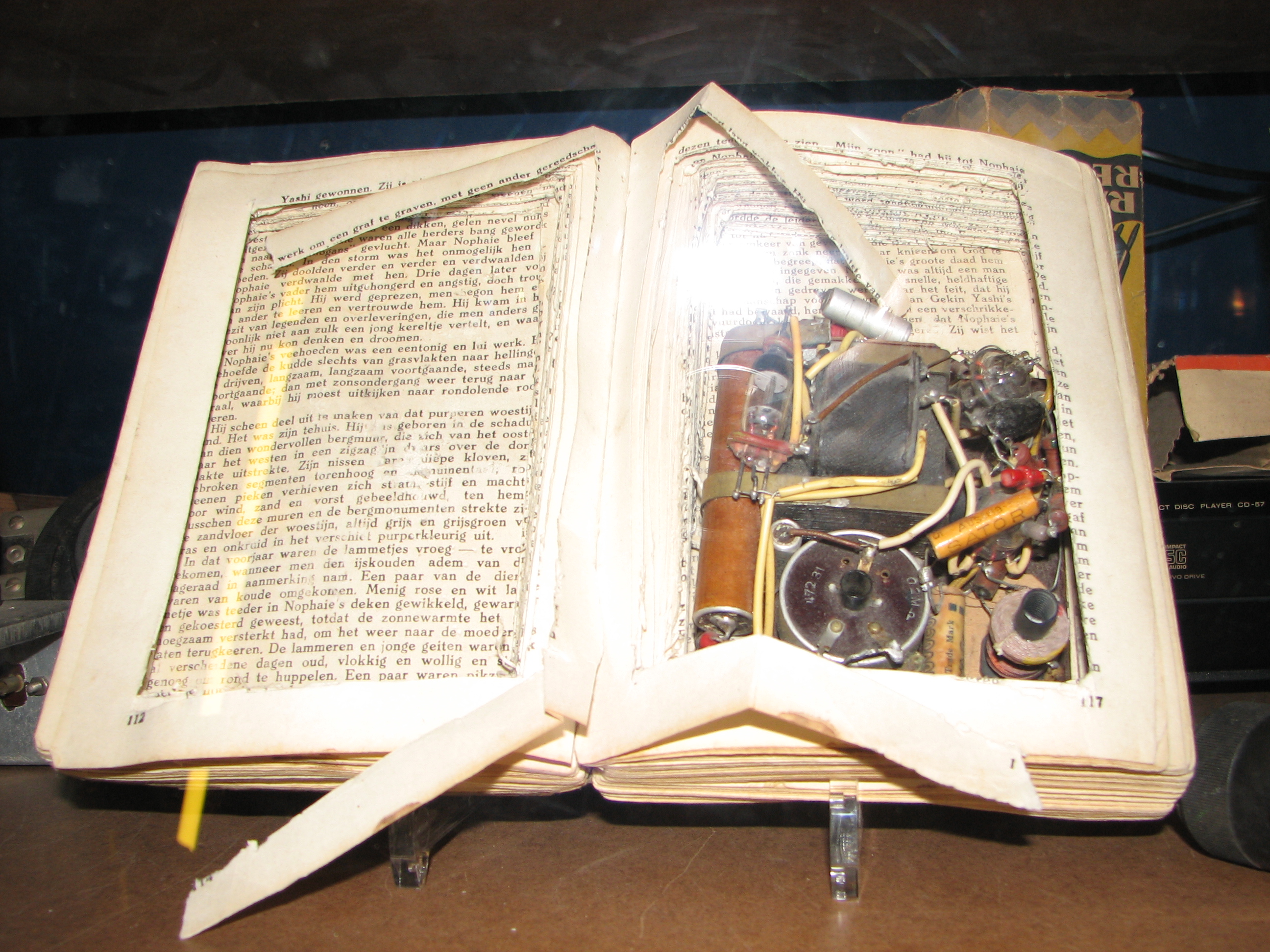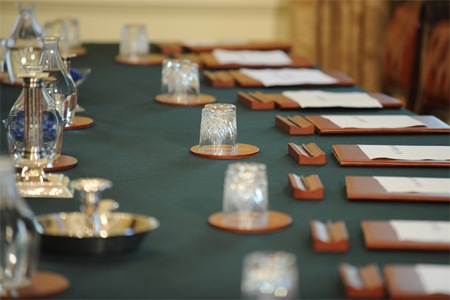|
False Bottom
A false bottom (or false back) is an internal partition in a container, typically at the bottom of a drawer, suitcase or similar item, enabling the concealment of objects from a cursory examination of the item's contents. A false bottom may be present if the internal dimensions of a container do not match its external dimensions after taking into account the thicknesses of constituent materials and structures used to build the object. The term false bottom can also refer to the deep scattering layer in the ocean, a phenomenon where a layer of marine organisms deep in the ocean can be mistaken by sonar for the seabed.Hersey JB and Backus RH (2005"Sound Scattering by Marine Organisms"In: M. N. Hill and A. R. Robinson (Eds)''Physical Oceanography'', Page 499, Harvard University Press. . See also *Concealment device *Drawer (furniture) A drawer is a box-shaped container inside a piece of furniture that can be pulled out horizontally to access its contents. Drawers are built i ... [...More Info...] [...Related Items...] OR: [Wikipedia] [Google] [Baidu] |
Packaging
Packaging is the science, art and technology of enclosing or protecting products for distribution, storage, sale, and use. Packaging also refers to the process of designing, evaluating, and producing packages. Packaging can be described as a coordinated system of preparing goods for transport, warehousing, logistics, sale, and end use. Packaging contains, protects, preserves, transports, informs, and sells. In many countries it is fully integrated into government, business, institutional, industrial, and personal use. Package labeling (American English) or labelling (British English) is any written, electronic, or graphic communication on the package or on a separate but associated label. History of packaging Ancient era The first packages used the natural materials available at the time: baskets of reeds, wineskins (bota bags), wooden boxes, pottery vases, ceramic amphorae, wooden barrels, woven bags, etc. Processed materials were used to form packages as they were develope ... [...More Info...] [...Related Items...] OR: [Wikipedia] [Google] [Baidu] |
Drawer (furniture)
A drawer is a box-shaped container inside a piece of furniture that can be pulled out horizontally to access its contents. Drawers are built into numerous types of furniture, including cabinets, chests of drawers (bureaus), desks, and the like. Construction Drawers can be built in various ways using a variety of materials, including wood, various wood composites, sheet metal, and plastic. Wooden drawers are often designed so that the front face is complete and the end grain from the side pieces does not show. The corners may be dovetailed for additional strength or for aesthetics, and a half-blind dovetail joint may be used for the front corners to hide the joint. To attach the bottom piece of the drawer, a groove may be cut in the four vertical pieces to insert the bottom of the drawer. Handles and locks One or two handles or drawer pulls are commonly attached to the front face of the drawer to facilitate pulling it out from its enclosure. In some cases, drawers may ... [...More Info...] [...Related Items...] OR: [Wikipedia] [Google] [Baidu] |
Observational Study
In fields such as epidemiology, social sciences, psychology and statistics, an observational study draws inferences from a sample (statistics), sample to a statistical population, population where the dependent and independent variables, independent variable is not under the Scientific control, control of the researcher because of ethical concerns or logistical constraints. One common observational study is about the possible effect of a treatment on subjects, where the assignment of subjects into a treated group versus a control group is outside the control of the investigator. This is in contrast with experiments, such as randomized controlled trials, where each subject is Random assignment, randomly assigned to a treated group or a control group. Observational studies, for lacking an assignment mechanism, naturally present difficulties for inferential analysis. Motivation The independent variable may be beyond the control of the investigator for a variety of reasons: * A ran ... [...More Info...] [...Related Items...] OR: [Wikipedia] [Google] [Baidu] |
Dimensions
In physics and mathematics, the dimension of a mathematical space (or object) is informally defined as the minimum number of coordinates needed to specify any point within it. Thus, a line has a dimension of one (1D) because only one coordinate is needed to specify a point on itfor example, the point at 5 on a number line. A surface, such as the boundary of a cylinder or sphere, has a dimension of two (2D) because two coordinates are needed to specify a point on itfor example, both a latitude and longitude are required to locate a point on the surface of a sphere. A two-dimensional Euclidean space is a two-dimensional space on the plane. The inside of a cube, a cylinder or a sphere is three-dimensional (3D) because three coordinates are needed to locate a point within these spaces. In classical mechanics, space and time are different categories and refer to absolute space and time. That conception of the world is a four-dimensional space but not the one that was found necessa ... [...More Info...] [...Related Items...] OR: [Wikipedia] [Google] [Baidu] |
Constituent
{{Disambiguation ...
Constituent or constituency may refer to: Politics * An individual voter within an electoral district, state, community, or organization * Advocacy group or constituency * Constituent assembly * Constituencies of Namibia Other meanings * Constituent (linguistics), a word or a group of words that function as a single unit within a hierarchical structure * Constituent quark, a current quark with a notional "covering" See also * Ingredient * Part (other) Part, parts or PART may refer to: People *Armi Pärt (born 1991), Estonian handballer *Arvo Pärt (born 1935), Estonian classical composer * Brian Part (born 1962), American child actor * Dealtry Charles Part (1882–1961), sheriff (1926–1927) ... [...More Info...] [...Related Items...] OR: [Wikipedia] [Google] [Baidu] |
Structures
A structure is an arrangement and organization of interrelated elements in a material object or system, or the object or system so organized. Material structures include man-made objects such as buildings and machines and natural objects such as biological organisms, minerals and chemicals. Abstract structures include data structures in computer science and musical form. Types of structure include a hierarchy (a cascade of one-to-many relationships), a network featuring many-to-many links, or a lattice featuring connections between components that are neighbors in space. Load-bearing Buildings, aircraft, skeletons, anthills, beaver dams, bridges and salt domes are all examples of load-bearing structures. The results of construction are divided into buildings and non-building structures, and make up the infrastructure of a human society. Built structures are broadly divided by their varying design approaches and standards, into categories including building structures, archi ... [...More Info...] [...Related Items...] OR: [Wikipedia] [Google] [Baidu] |
Deep Scattering Layer
The deep scattering layer, sometimes referred to as the sound scattering layer, is a layer in the ocean consisting of a variety of marine animals. It was discovered through the use of sonar, as ships found a layer that scattered the sound and was thus sometimes mistaken for the seabed. For this reason it is sometimes called the false bottom or phantom bottom. It can be seen to rise and fall each day in keeping with diel vertical migration. Sonar operators, using the newly developed sonar technology during World War II, were puzzled by what appeared to be a false sea floor 300–500 metres (980–1,640 ft) deep at day, and less deep at night. Initially, this mysterious phenomenon was called the ECR layer using the initials of its three discoverers. It turned out to be due to millions of marine organisms, most particularly small mesopelagic fish, with swim bladders that reflected the sonar. These organisms migrate up into shallower water at dusk to feed on plankton. The layer ... [...More Info...] [...Related Items...] OR: [Wikipedia] [Google] [Baidu] |
Sonar
Sonar (sound navigation and ranging or sonic navigation and ranging) is a technique that uses sound propagation (usually underwater, as in submarine navigation) to navigation, navigate, measure distances (ranging), communicate with or detect objects on or under the surface of the water, such as other vessels. "Sonar" can refer to one of two types of technology: ''passive'' sonar means listening for the sound made by vessels; ''active'' sonar means emitting pulses of sounds and listening for echoes. Sonar may be used as a means of acoustic location and of measurement of the echo characteristics of "targets" in the water. Acoustic location in air was used before the introduction of radar. Sonar may also be used for robot navigation, and SODAR (an upward-looking in-air sonar) is used for atmospheric investigations. The term ''sonar'' is also used for the equipment used to generate and receive the sound. The acoustic frequencies used in sonar systems vary from very low (infrasonic ... [...More Info...] [...Related Items...] OR: [Wikipedia] [Google] [Baidu] |
Seabed
The seabed (also known as the seafloor, sea floor, ocean floor, and ocean bottom) is the bottom of the ocean. All floors of the ocean are known as 'seabeds'. The structure of the seabed of the global ocean is governed by plate tectonics. Most of the ocean is very deep, where the seabed is known as the abyssal plain. Seafloor spreading creates mid-ocean ridges along the center line of major ocean basins, where the seabed is slightly shallower than the surrounding abyssal plain. From the abyssal plain, the seabed slopes upward toward the continents and becomes, in order from deep to shallow, the continental rise, slope, and shelf. The depth within the seabed itself, such as the depth down through a sediment core, is known as the “depth below seafloor.” The ecological environment of the seabed and the deepest waters are collectively known, as a habitat for creatures, as the “benthos.” Most of the seabed throughout the world's oceans is covered in layers of marine sediments. ... [...More Info...] [...Related Items...] OR: [Wikipedia] [Google] [Baidu] |
Concealment Device
Concealment devices or diversion safes are used to hide things for the purpose of secrecy or security. They are made from an ordinary household object such as a book, a soda can, a candle, a can, or something as small as a coin. The idea is that such an inconspicuous object would not be expected to contain anything of worth. Examples in espionage include dead drop spikes for transferring items to other people, and hollowed-out coins or hollowed out teeth for concealing something - such as microfilm or a suicide pill. Examples in smuggling include suitcases with false bottoms for hiding contraband. During World War II MI9 was responsible for creating many concealment devices for "escape aids" to assist prisoners of war to escape. Examples Ammunition Starting in the First World War and still continuing today, military personnel use ammunition casings to hide small amounts of critical information e.g. encryption/recognition codes or navigational grid references etc. The hiding pl ... [...More Info...] [...Related Items...] OR: [Wikipedia] [Google] [Baidu] |
Cabinets (furniture)
A cabinet is a body of high-ranking state officials, typically consisting of the executive branch's top leaders. Members of a cabinet are usually called cabinet ministers or secretaries. The function of a cabinet varies: in some countries, it is a collegiate decision-making body with collective responsibility, while in others it may function either as a purely advisory body or an assisting institution to a decision-making head of state or head of government. Cabinets are typically the body responsible for the day-to-day management of the government and response to sudden events, whereas the legislative and judicial branches work in a measured pace, in sessions according to lengthy procedures. In some countries, particularly those that use a parliamentary system (e.g., the UK), the Cabinet collectively decides the government's direction, especially in regard to legislation passed by the parliament. In countries with a presidential system, such as the United States, the Cab ... [...More Info...] [...Related Items...] OR: [Wikipedia] [Google] [Baidu] |








